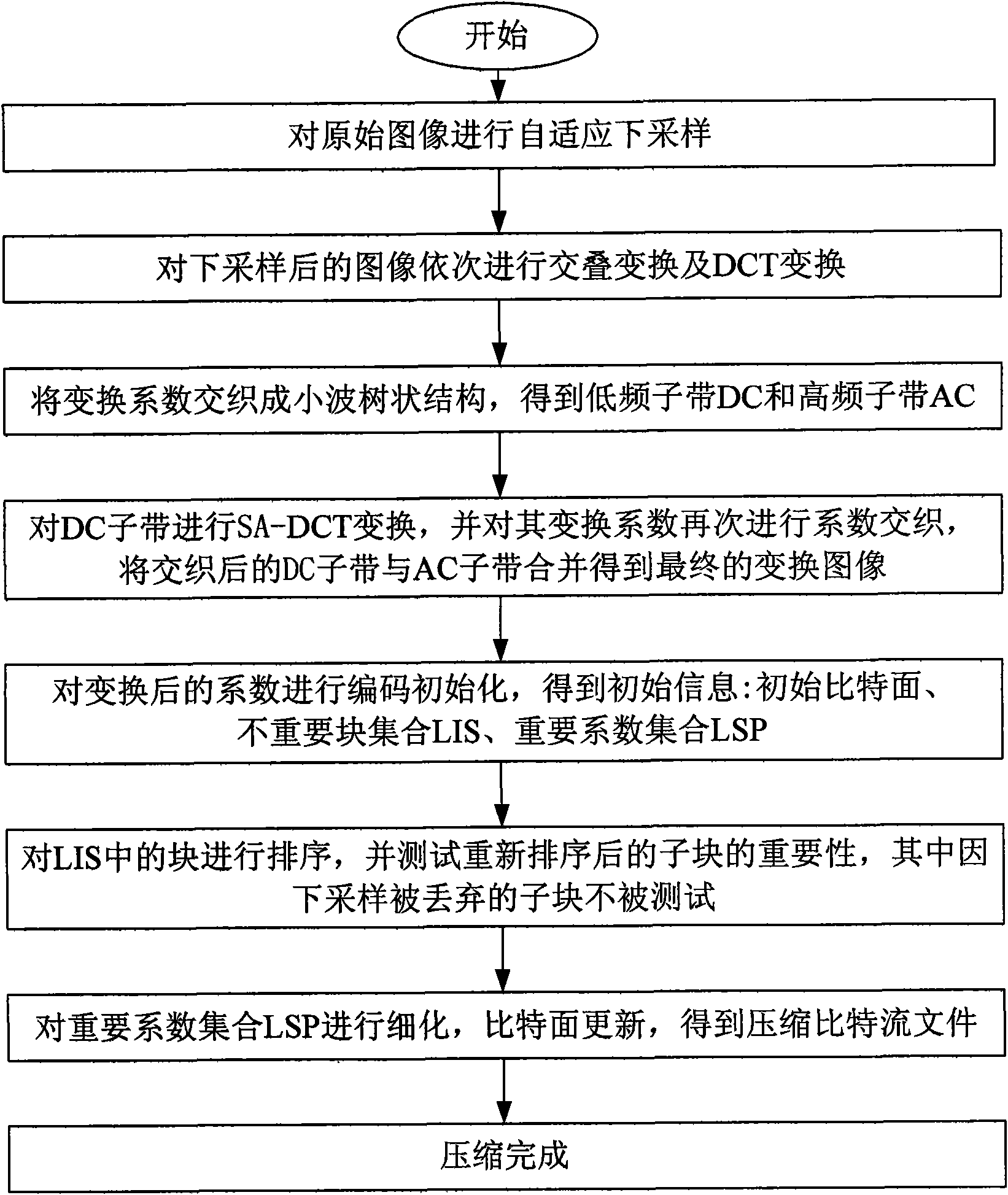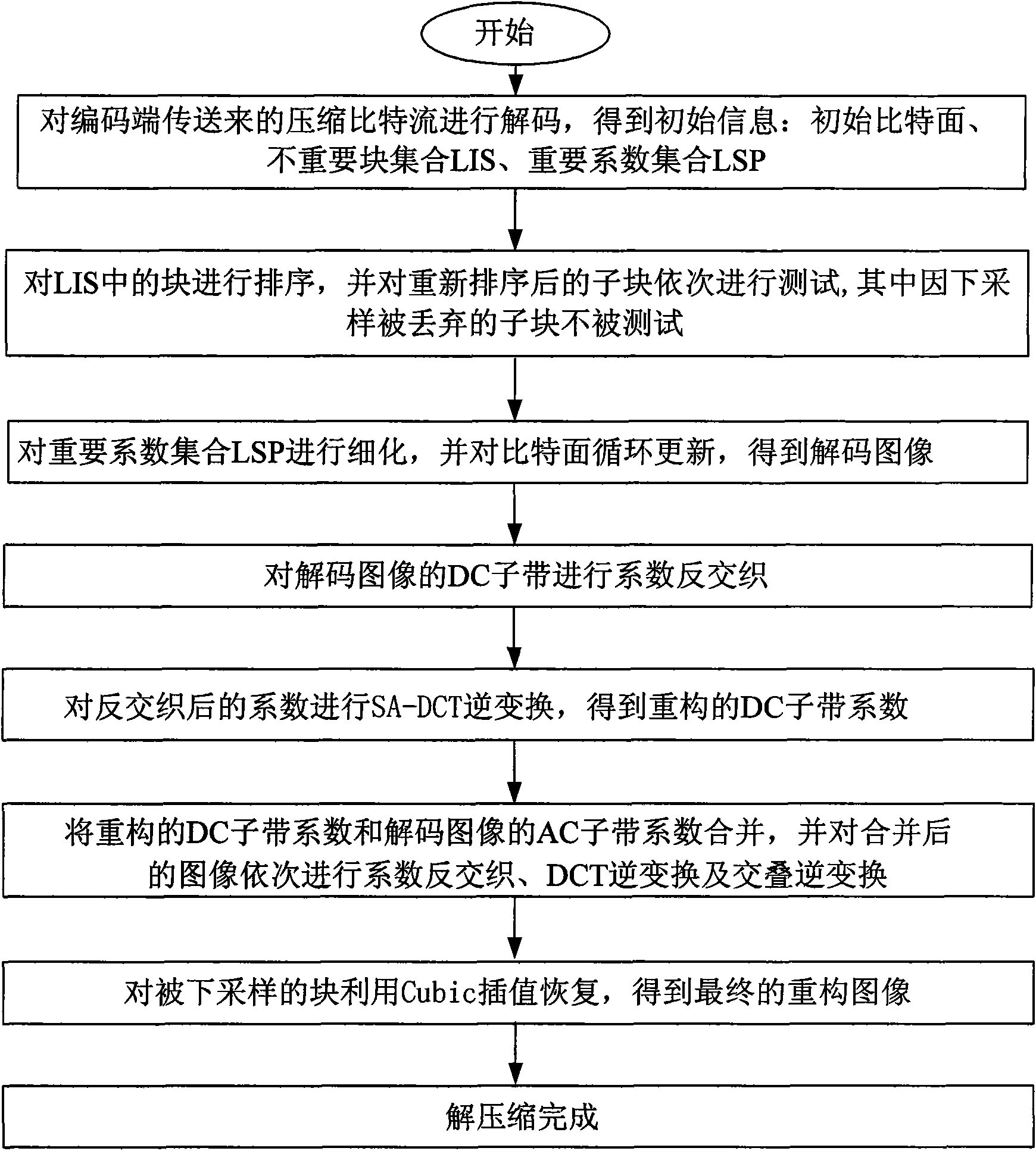Adaptive down-sampling and lapped transform-based image compression method
An image compression and adaptive technology, applied in the field of image processing, can solve the problems of difficult to sample high-resolution images, difficult to estimate correlation, and high complexity, achieve good subjective visual effects, eliminate block effects, and overcome poor real-time performance. Effect
- Summary
- Abstract
- Description
- Claims
- Application Information
AI Technical Summary
Problems solved by technology
Method used
Image
Examples
Embodiment Construction
[0030] refer to figure 1 , the image compression process of the present invention is as follows:
[0031] Step 1: Perform DCT transformation on the original image, use SPECK to precode the transformed image at the current code rate, and obtain the threshold value of the cut-off bit plane, denoted as MT;
[0032] Step 2, divide the original image into blocks with a size of 32*32, and then make the following judgments for each block:
[0033] (2a) Perform DCT transformation on the current block, if the number of coefficients greater than the threshold MT does not exceed 1.6% of the total number of coefficients in the block, perform 5 / 3 wavelet transformation on the block, otherwise, do not transform, and mark the block as 0;
[0034] (2b) Perform DCT transformation on the low-frequency subband of the 5 / 3 wavelet transformed block, if the number of coefficients greater than the threshold MT does not exceed 1.6% of the total number of coefficients in the low-frequency subband, t...
PUM
 Login to View More
Login to View More Abstract
Description
Claims
Application Information
 Login to View More
Login to View More - R&D
- Intellectual Property
- Life Sciences
- Materials
- Tech Scout
- Unparalleled Data Quality
- Higher Quality Content
- 60% Fewer Hallucinations
Browse by: Latest US Patents, China's latest patents, Technical Efficacy Thesaurus, Application Domain, Technology Topic, Popular Technical Reports.
© 2025 PatSnap. All rights reserved.Legal|Privacy policy|Modern Slavery Act Transparency Statement|Sitemap|About US| Contact US: help@patsnap.com



